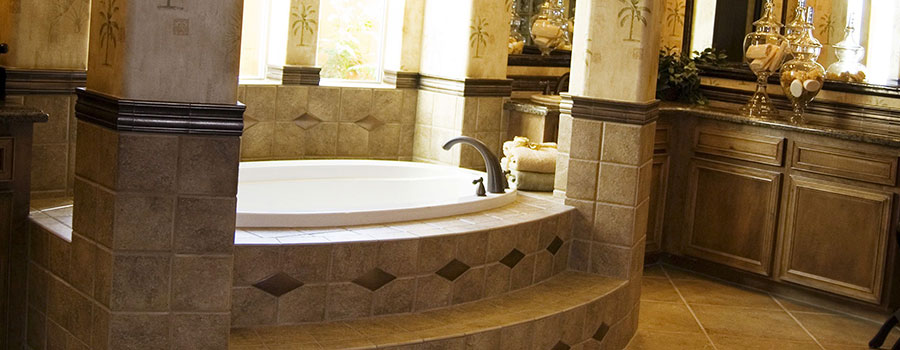When it comes to bathrooms, a lot of people would think of getting tiles for the bathroom flooring. Regardless of a planned home addition design or a bathroom renovation, having a nice bathroom should be planned accordingly.
There are a lot of things to consider when building or renovating a bathroom – from the countertop material to the shape of the bathtub that will suit the bathroom. You might even want to consider whether to put indoor plants in your bathroom area. But for now, we have to think about which type of flooring to put in the bathroom.
All about bathroom flooring
Two of the most popular bathroom flooring are ceramic and porcelain tiles. They may seem like the same thing. A lot of people wouldn’t even think about a specific floor tile as long as it looks nice and is specifically meant for bathrooms.
It is understandable, though. Not everyone knows the difference between ceramic and porcelain tiles. They are both used usually for bathrooms and the same installation process. Perhaps one type of tile is a little expensive than the other. But just how do they differ from each other?
For one thing, ceramic and porcelain belong to the same type of tiles called ceramics. This type of tile is made from organic earthen clays and then hardened using heat. But lately, porcelain tiles had their own flooring category as it is said to have different specs from other bathroom tiles.
Nonetheless, you should consider the type of bathroom material to use when planning on building a home addition. One factor to consider aside from color and design is its water absorption level.
What’s with ceramic tiles?
Ceramic tiles are usually made from coarse clay mixed with a small amount of fine kaolin clay. Likewise, it does not have the same additives as those in porcelain clay. Ceramic tiles also tend to be a little porous than porcelain tiles, though it may not be a big deal especially if the former is treated with glaze.
Ceramic tiles are also less expensive than porcelain tiles (starts at $.50 per square foot) and used indoors only. Ceramic tiles usually come in monochromatic colors. You can ask professional home remodeling architects whether ceramic tiles will suit your budget and bathroom design.
As mentioned, ceramic tiles are more porous than porcelain bathroom tiles. On the upside, ceramic tiles can resist heat better than porcelain, which is why the former can be a good countertop material.
As for care and maintenance, ceramic tiles are not that difficult to clean. As bathroom tile material, it needs regular mopping and period sealing. Glazed ceramic tiles also have less tendency to absorb water. But if you have unglazed tiles, you might have to apply sealers on the whole tiles.
What’s with porcelain tiles?
Meanwhile, porcelain tiles have a lower water absorption rate. Like ceramic tiles, porcelain tiles also use kaolin clay but with a mix of feldspar and quartz. Unlike ceramic tiles, porcelain can mimic different materials like marble and wood grains.
That is why porcelain tiles are a good choice if you want that wooden look but more durable. Plus, porcelain tiles are available in different patterns, colors, and finishes. A home addition builder can help you choose the best tiles that will achieve your dream bathroom.
Porcelain tiles are also less water absorbent which also makes a great material for outdoor use. Because it has good heat resistant properties, it is also a good countertop material choice. As for care and maintenance, you need to fill the joints with grout to prevent the formation of mildew and stains.
However, make sure to let professionals or home remodel personnel install your porcelain tiles. These tiles are brittle and mishandling it can mean disaster. It also requires using a wet tile saw for cutting. Porcelain tiles are also expensive as compared to ceramic tiles.
Final thoughts
These are things that you should consider when choosing between ceramic or porcelain tiles. When planning a home addition design for a bathroom, you should also consider the tiles you are going to use. At the end of the day, it all boils down to budget, thickness (especially if they will be used for flooring), and style for your visual preference. You can also check out different tile brands where you can choose the tiles that will achieve your bathroom aesthetic goals. Of course, make sure to get help from the best home addition companies in DC!



